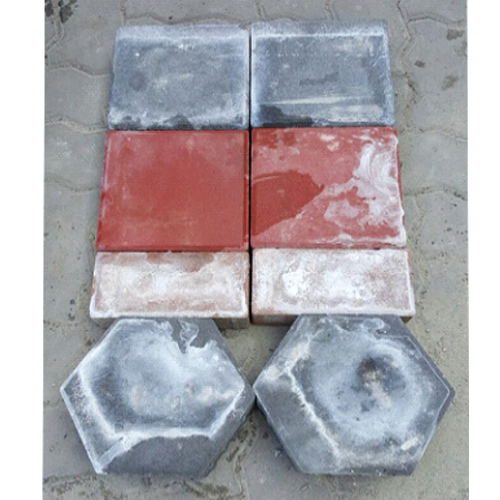
EFFLORESCENCE IS A NATURAL PHENOMENON
Commonly found in most concrete-based or cementitious products. Efflorescence is the white deposit/ discoloration caused by crystalline deposits of salts on concrete surfaces.
These deposits often contain compounds such as calcium, sodium and potassium hydroxides or carbonates, bicarbonates, chlorides, and sulfates of calcium and magnesium. These substances typically originate as soluble compounds within the concrete that are transported and deposited on the surface by upward moisture migration and evaporation. Sometimes, they originate in the underlying soil where they are carried by moisture upward through the concrete and deposited on the surface.
Water is the solvent and vehicle for transporting the soluble salts to the surface. While not harmful, it is unsightly, especially on integral-coloured concrete. Efflorescence can form a thick layer on the surface, which can completely hide the concrete’s colour or create unsightly white patches.
HOW TO REMOVE EFFLORESCENCE
Efflorescence is generally washed off by the rain after 1-2 years. Commercial products are available to anyone not wanting to wait that long. One advantage here is that the lime in the upper layers of the concrete is also removed in the process. However, the surface may become rougher and the shade may change slightly.
For your project, you will need a mild or diluted acidic solution that is stronger than vinegar water. For gray concrete, the following solutions are recommended:
One part hydrochloric acid (muriatic) in 10 to 20 parts water (10 percent to 5 percent concentration) OR one part phosphoric acid in 10 parts water. However, more diluted solutions are recommended for integral-coloured concrete pavers to avoid surface etching that may reveal aggregates and change the color and texture of the surface. Start with one part hydrochloric acid in 50 or 100 parts of water (2 percent to 1 percent concentration) and increase the concentration as needed.
Before using the acidic solution, flood the surface with clean water to prevent the acid from being absorbed into the concrete pavement. Allow the acidic solution to set for three to five minutes before scouring off the efflorescence with a stiff brush. Immediately and thoroughly flush the surface with clean water to remove all acid. Apply the solution uniformly in terms of concentration, amount, and duration. Protect surfaces that can be damaged by acid and treat the entire slab to achieve a uniform colour and texture.
Always perform a trial treatment on an inconspicuous area to check for adverse effects and to perfect the technique.
Disclaimer
The information in our technical section whether in writing, images or by way of trials are given in good faith but without warranty, and this also applies where proprietary rights of third parties are involved.
Our advice does not release you from the obligation to check its validity and to test our products as to their suitability for the intended processes and uses.
The application, use and processing of our products and the product manufactured by you on the basis of our technical advice are beyond our control and, therefore, entirely your own responsibility.
